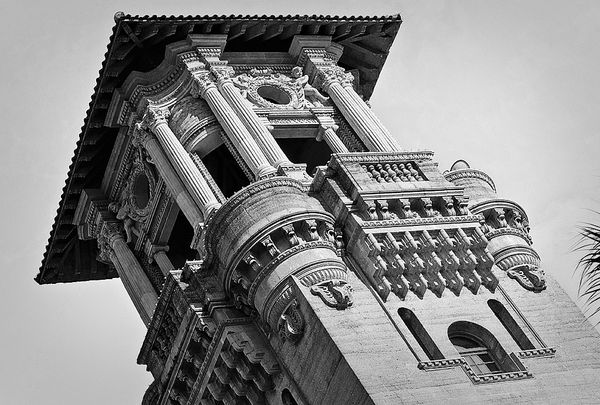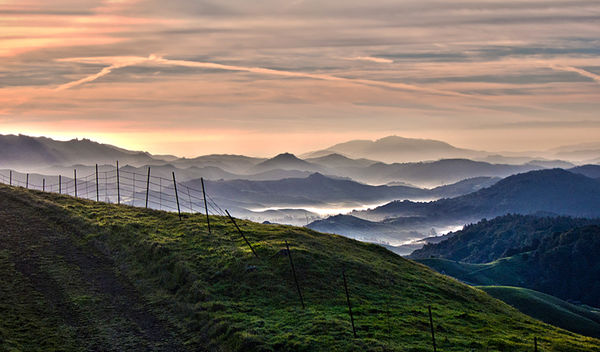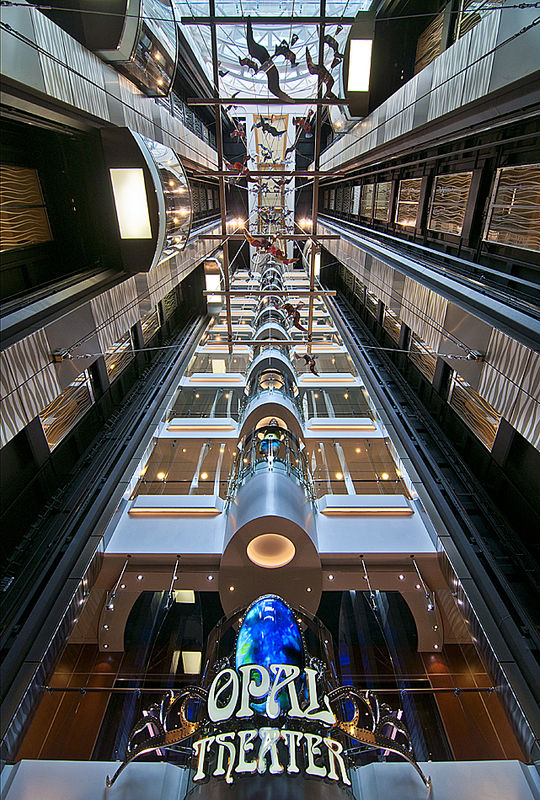Posts for: architect
Mar 26, 2013 09:44:44 #
wilsondl2 wrote:
A 50mm is a 50mm no matter what you put it on. T... (show quote)
Good advice. I will go out and test my shake speed. Unless I missed it, no one has mentioned Image Stabilization (VR, etc) and what it will allow the guideline to be modified.
Mar 24, 2013 20:47:38 #
With some discipline such as shooting at the lowest ISO setting, using a tripod when appropriate, and getting a perfect exposure, preferably in RAW, Compact cameras such as this can produce some excellent results in quite large prints. And comparable to what a DSLR can do. It is just not as easy to get the best results with a small sensor. But the lens puts this type of camera at a big advantage in many situations.
Mar 24, 2013 12:57:20 #
You apparently have a very steady hand! Nice work.
Mar 20, 2013 09:00:46 #
We were just there the end of January. Great place to take photos.

Mar 11, 2013 23:33:00 #
Let's face reality. A cross country, blue highway, National Park, small town, bridges of Madison County tour is a great fun thing to do, but if you are open minded enough you can find wonderful things to photograph in your own back yard.
(Especially if you live in California :-)
(Especially if you live in California :-)
Mar 11, 2013 20:32:44 #
Wow. So many terrific suggestions. I am a California native although I now live in Chattanooga, Tennessee. California has many things to see, many of which are common subjects for photographers. Posted is a shot taken in the hills behind Oakland, California showing what you can find just by getting off the main roads and walking a bit.

Mar 8, 2013 08:25:30 #
Rick0413 wrote:
I have the Tokina 11-16 F2.8 for my D90. The version for the D600 would be the 16-28. I love the lens. The Ken Rockwell site mentioned above is a great site. That's where I got the info to buy this lens. He likes it.
I second this recommendation, as I also have the D90 and Tokina 11-16. Great lens, and I also bought it based on Ken Rockwell's article. The zoom range is small, so it is not a really flexible lens, but I most use it at 11 mm for architectural interiors anyway.
Mar 8, 2013 08:21:07 #
I am retired, and we go on one or two cruises to the Caribbean a year. My wife and I love to photograph while on vacation. She takes a Kodak bridge camera and a Pentax underwater camera. Because I am not on the cruise to relax (I relax ALL the time being retired), I am interested in the architecture of the places visited, as well as the scenery, so I take my Nikon D90 with an 18-200 mm VR and a super wide angle 11-16 mm. That combination allows me to shoot, handheld, in most situations, including interiors.
Oasis of the Seas Atrium- 11 mm lens

Mar 7, 2013 18:55:44 #
mfeveland wrote:
quote=HarryBinNC quote=architect I come from a 3... (show quote)
Thanks mfeveland, AND thank you HarryBinNC, because you bring up a good point. IF I did all the things I described for every shot (esp. exposure compensation, etc.), I would be, as you point out, doing as much work as shooting Manual. But it is only on rare occasions that I need exposure compensation, such as backlighting or that gorgeous Snowy Egret. Knowing how the camera works, and having had lots of experience in Manual settings, I greatly appreciate how the SEMI-auto (not full auto) settings allow one to concentrate on the really important things, such as subject and composition. I pre-set things like Auto ISO only if I thing they might be valuable for the day's or night's shooting. You can call them "grab shots", but mine are pre-conceived and planned based on the subjects. As I mentioned, I do use AP 90% of the time, with the rest being Manual, such as macros, night shots, and studio shots.
Thanks also to winterrose for starting this most interesting thread.
Mar 7, 2013 07:14:14 #
I come from a 35mm film and medium format background where you had to select everything manually, even (gasp) focusing! 90% of my shooting is in Aperture Priority and here is my reasoning why. For control of DOF, AP is a no-brainer. For control of speed, where the highest speed possible is desired, AP works fine by setting the aperture wide open and setting an Auto ISO limit higher than base ISO with a minimum shutter speed. Depending on the lighting and contrast conditions, I adjust exposure using the exposure compensation adjustment based on the histogram or viewing the LCD (I view using the "blinkies" mode.)
My point is, I do no use AP because I am lazy. I use it, combined with the other controls I mentioned, because I find it the simplest way to get exactly what I want.
My point is, I do no use AP because I am lazy. I use it, combined with the other controls I mentioned, because I find it the simplest way to get exactly what I want.
Mar 5, 2013 11:32:13 #
SteveR wrote:
quote=architect I hate to repeat, but, the DOF pr... (show quote)
Your eyes must be better than mine. They are certainly younger. I just tried my Nikon D90 at F16 and F22, and I could not see well enough through the viewfinder to judge DOF because of the darkening of the image. I had the same problems with my Nikon FTN film camera at a much younger age. So I will stick with my opinion that using the LCD for critical view on a test shot is better.
Mar 4, 2013 23:41:58 #
I hate to repeat, but, the DOF preview button image as seen in the viewfinder can often be too dark to really evaluate DOF. It is much better to take a test shot at the desired aperture and evaluate it on the LCD screen, using the magnifying button to more critically view the image. That view will be much brighter and more easily evaluated.
Mar 4, 2013 22:17:03 #
kit_kit wrote:
Try it. quote=architect quote=kit_kit Do you know if it'... (show quote)
Mar 4, 2013 19:55:46 #
cameranut64 wrote:
I have been wondering the same thing, I haven't read anything about being able to use a remote release and also if there is an adapter to use filters.
I have been wondering the same thing, I haven't read anything about being able to use a remote release and also if there is an adapter to use filters.
Good question. Filters, especially polarizing, neutral density and graduated neutral density filters are great tools to improve images in camera. Another advantage, cost wise, of bridge cameras, is that if they do have threading for filters, it will be a smaller size, and cheaper than what is required for a DSLR.
Mar 4, 2013 19:40:37 #
kit_kit wrote:
Do you know if it's compatible with a remote shutter release?
Since bridge cameras do not have a mirror lift up to "shock" the camera, a very gentle hand on the camera, especially if mounted on a sturdy tripod, should cause no noticeable degradation of the image. In any case, the camera does provide for a 2 or 10 second delay after pressing the shutter, which is in effect the same thing except for the ability to precisely time the release.